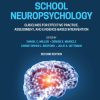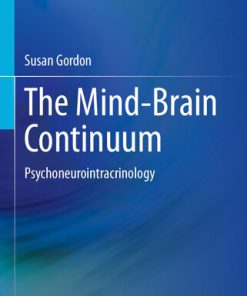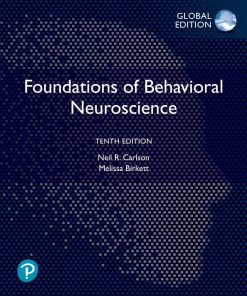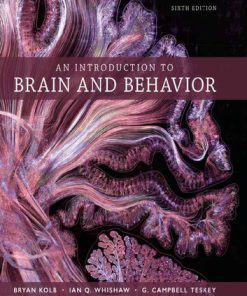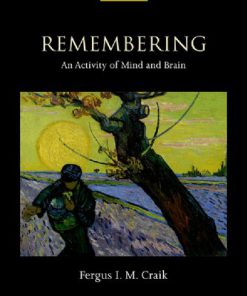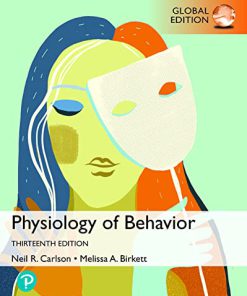The Mind s Machine Foundations of Brain and Behavior 4th Edition by Neil Verne Watson, S Marc Breedlove ISBN 9781605359731 1605359734
$50.00 Original price was: $50.00.$25.00Current price is: $25.00.
The Mind s Machine Foundations of Brain and Behavior 4th Edition by Neil Verne Watson, S Marc Breedlove – Ebook PDF Instant Download/Delivery: 9781605359731, 1605359734
Full download The Mind s Machine Foundations of Brain and Behavior 4th Edition after payment
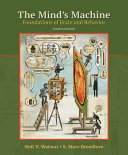
Product details:
ISBN 10: 1605359734
ISBN 13: 9781605359731
Author: Neil Verne Watson, S Marc Breedlove
The Mind’s Machine imparts the core concepts of behavioral neuroscience to students in a diverse range of disciplines, including not only psychology and the other life sciences, but art, philosophy, media studies, linguistics, and the like. The Mind’s Machine , Fourth Edition, offers a streamlined text, full-color art, novel pedagogical features, and real-life examples and analogies to engage students new to neuroscience without sacrificing accuracy. This accessible, reader-friendly book is appropriate for brain and behavior, biopsychology, and physiological psychology courses.
Optimize Student Learning with Oxford Insight
The Mind’s Machine, Fourth Edition, is also available separately in Oxford Insight. Oxford Insight delivers the content of The Mind’s Machine within powerful, data-driven courseware designed to optimize student success. with a foundation in learning science, Insight enables instructors to deliver a personalized and engaging learning experience that empowers students by actively engaging them with assigned reading. This adaptivity, paired with real-time actionable data about student performance, helps instructors ensure that each student is best supported along their unique learning path. Contact your Oxford University Press representative or visit https://oxfordinsight.oup.com/ to learn more
The Mind s Machine Foundations of Brain and Behavior 4th Edition Table of contents:
1: Structure and Function Neuroanatomy and Research Methods
1.1 The Nervous System Is Made of Specialized Cells
The neuron has four principal divisions
Information is transmitted through synapses
The axon integrates and then transmits information
Glial cells protect and assist neurons
1.2 The Nervous System Extends throughout the Body
The peripheral nervous system has two divisions
The central nervous system consists of the brain and spinal cord
1.3 The Brain Shows Regional Specialization of Functions
The cerebral cortex performs complex cognitive processing
Important nuclei are hidden beneath the cerebral cortex
The midbrain has sensory and motor components
The brainstem controls vital body functions
Behaviors and cognitive processes depend on networks of brain regions
1.4 Specialized Support Systems Protect and Nourish the Brain
The brain floats within layers of membranes
The brain relies on two fluids for survival
SIGNS & SYMPTOMS Stroke
1.5 Scientists Have Devised Clever Techniques for Studying the Structure and Function of the Nervous System
Histological techniques let us view the cells of the nervous system in varying ways
Brain-imaging techniques reveal the structure and function of the living brain
RESEARCHERS AT WORK Subtractive analysis isolates specific brain activity
1.6 Careful Research Design Is Essential for Progress in Behavioral Neuroscience
Three types of study designs probe brain-behavior relationships
Animal research is an essential part of life sciences research, including behavioral neuroscience
Behavioral neuroscientists use several levels of analysis
Visual Summary
2: Neurophysiology The Generation, Transmission, and Integration of Neural Signals
2.1 Electrical Signals Are the Vocabulary of the Nervous System
A threshold amount of depolarization triggers an action potential
Ionic mechanisms underlie the action potential
Action potentials are actively propagated along the axon
BOX 2.1 How Is an Axon Like a Toilet?
SIGNS & SYMPTOMS Multiple Sclerosis
Synapses cause local changes in the postsynaptic membrane potential
Spatial summation and temporal summation integrate synaptic inputs
2.2 Synaptic Transmission Requires a Sequence of Events
Action potentials cause the release of transmitter molecules into the synaptic cleft
Receptor molecules recognize transmitters
The action of synaptic transmitters is stopped rapidly
Neural circuits underlie reflexes
2.3 EEGs Measure Gross Electrical Activity of the Human Brain
Electrical storms in the brain can cause seizures
RESEARCHERS AT WORK Surgical probing of the brain revealed a map of the body
Visual Summary
3: The Chemistry of Behavior Neurotransmitters and Neuropharmacology
3.1 Synaptic Transmission Is a Complex Electrochemical Process
RESEARCHERS AT WORK The first transmitter to be discovered was acetylcholine
3.2 Neurotransmitter Substances Differ in Their Chemical Structure and in Their Distribution within the Brain
The most abundant neurotransmitters are amino acids
Four classical neurotransmitters modulate brain activity
Many peptides function as neurotransmitters
Some neurotransmitters are gases
3.3 Drugs Fit Like Keys into Molecular Locks
Drugs are administered and eliminated in many different ways
The effects of a drug depend on its dose
Repeated treatments may reduce the effectiveness of drugs
3.4 Drugs Affect Each Stage of Neural Conduction and Synaptic Transmission
Some drugs alter presynaptic processes
Some drugs alter postsynaptic processes
3.5 Some Neuroactive Drugs Provide Relief from Mental Illness and Pain
Antipsychotics relieve symptoms of schizophrenia
Antidepressants reduce chronic mood problems
Anxiolytics combat anxiety
Opiates have powerful painkilling effects
3.6 Some Neuroactive Drugs Are Used to Alter Conscious Experience
Cannabinoids have many effects
Stimulants increase neural activity
Alcohol acts as both a stimulant and a depressant
Hallucinogens alter sensory perceptions
3.7 Substance Abuse and Addiction Are Global Social Problems
Competing models of substance abuse have been proposed
SIGNS & SYMPTOMS Medical Interventions for Substance Abuse
Visual Summary
4: Development of the Brain
4.1 Growth and Development of the Brain Are Orderly Processes
Development of the nervous system can be divided into six distinct stages
Cell proliferation produces cells that become neurons or glia
In the adult brain, newly born neurons aid learning
The death of many neurons is a normal part of development
4.2 An Explosion of Synapse Formation Is Followed by Synapse Rearrangement
Retaining too many synapses can impair intellectual development
Visual deprivation can lead to blindness
Early exposure to visual patterns helps fine-tune connections in the visual system
4.3 Experience Can Affect Brain Development by Altering Gene Expression
Genotype is fixed at birth, but phenotype changes throughout life
Experience regulates gene expression in the developing and mature brain
RESEARCHERS AT WORK Maternal care affects mouse behaviors
Gene expression in the brain can be affected by mothering
4.4 The Brain Continues to Change as We Grow Older
Memory impairment correlates with hippocampal shrinkage during aging
Alzheimer’s disease is associated with a decline in cerebral metabolism
SIGNS & SYMPTOMS Imaging Alzheimer’s Plaques
Visual Summary
5: The Sensorimotor System
5.1 Sensory Processing and the Somatosensory System
Receptor cells detect various forms of energy
Receptor cells convert sensory signals into electrical activity
Sensory information processing is selective and analytical
Sensory events are encoded as streams of action potentials
Sensory neurons respond to stimuli falling in their receptive fields
Successive levels of the CNS process sensory information
Sensory brain regions influence one another and change over time
5.2 Pain: The Body’s Emergency Signaling System
A discrete pain pathway projects from body to brain
SIGNS & SYMPTOMS A Professional Eater Meets His Match
Special neural pathways carry pain information to the brain
Pain control can be difficult
Analgesic drugs are highly effective
Electrical stimulation can sometimes relieve pain
Placebos effectively control pain in some people, but not all
Activation of endogenous opioids relieves pain
5.3 Movement and the Motor System
Muscles and the skeleton work together to move the body
The spinal cord mediates “automatic” responses and receives inputs from the brain
Motor cortex plans and executes movements—and more
RESEARCHERS AT WORK Mirror neurons in premotor cortex track movements in others
Extrapyramidal systems regulate and fine-tune motor commands
Visual Summary
6: Hearing, Balance, Taste, and Smell
6.1 Hearing: Pressure Waves in the Air Are Perceived as Sound
BOX 6.1 The Basics of Sound
The external ear captures, focuses, and filters sound
The middle ear concentrates sound energies
The cochlea converts vibrational energy into neural activity
RESEARCHERS AT WORK Georg von Békésy and the cochlear wave
The hair cells transduce movements of the basilar membrane into electrical signals
Auditory signals run from cochlea to cortex
6.2 Specialized Neural Systems Extract Information from Auditory Signals
The pitch of sounds is encoded in two complementary ways
Brainstem systems compare the ears to localize sounds
The auditory cortex processes complex sound
6.3 Hearing Loss Is a Widespread Problem
SIGNS & SYMPTOMS Restoring Auditory Stimulation in Deafness
6.4 Balance: The Inner Ear Senses the Position and Movement of the Head
Some forms of vestibular excitation produce motion sickness
6.5 Taste: Chemicals in Foods Are Perceived as Tastes
Tastes excite specialized receptor cells on the tongue
The five basic tastes are signaled by specific sensors on taste cells
Taste information is transmitted to several parts of the brain
6.6 Smell: Chemicals in the Air Elicit Odor Sensations
The sense of smell starts with receptor neurons in the nose
Olfactory information projects from the olfactory bulbs to several brain regions
Many vertebrates possess a vomeronasal system
Visual Summary
7: Vision From Eye to Brain
7.1 The Vision Pathway Extends from the Eye to the Brain
Visual processing begins in the retina
Photoreceptors respond to light by releasing less neurotransmitter
Different mechanisms enable the eyes to work over a wide range of light intensities
Acuity is best in foveal vision
Neural signals travel from the retina to several brain regions
The retina projects to the brain in a topographic fashion
7.2 Neurons at Different Levels of the Visual System Have Very Different Receptive Fields
Neurons in the retina and the LGN have concentric receptive fields
RESEARCHERS AT WORK Neurons in the visual cortex have varied receptive fields
Spatial-frequency analysis is unintuitive but efficient
Neurons in the visual cortex beyond area V1 have complex receptive fields and help identify forms
Visual perception of motion is analyzed by a special system that includes cortical area V5
7.3 Color Vision Depends on Integrating Information from the Retinal Cones
Color perception requires receptor cells that differ in their sensitivities to different wavelengths
SIGNS & SYMPTOMS Most Mammalian Species Have Some Color Vision
Some retinal ganglion cells and LGN cells show spectral opponency
Some visual cortical cells and regions appear to be specialized for color perception
7.4 What versus Where: Cortical Visual Areas Are Organized into Two Streams
Visual neuroscience can be applied to alleviate some visual deficiencies
SIGNS & SYMPTOMS Macular Degeneration Is the Leading Cause of Vision Loss as We Age
Visual Summary
8: Hormones and Sex
8.1 Hormones Act in a Great Variety of Ways throughout the Body
RESEARCHERS AT WORK Our current understanding of hormones developed in stages
Hormones are one of several types of chemical communication
Hormones can be classified by chemical structure
Hormones act on a wide variety of cellular mechanisms
Hormones can have different effects on different target organs
Box 8.1 Techniques of Behavioral Endocrinology
Each endocrine gland secretes specific hormones
The posterior pituitary releases two hormones directly into the bloodstream
Posterior pituitary hormones can affect social behavior
Feedback control mechanisms regulate the secretion of hormones
Hypothalamic releasing hormones govern the anterior pituitary
Two anterior pituitary tropic hormones act on the gonads
The gonads produce steroid hormones, regulating reproduction
Hormonal and neural systems interact to produce integrated responses
8.2 Reproductive Behavior Is Regulated by the Brain
Copulation brings gametes together
Gonadal steroids activate sexual behavior
RESEARCHERS AT WORK Individual differences in mating behavior
Estrogen and progesterone act on a lordosis circuit that spans from brain to muscle
Androgens act on a neural system for male reproductive behavior
Maternal behaviors are governed by several sex-related hormones
The hallmark of human sexual behavior is diversity
Hormones play only a permissive role in human sexual behavior
8.3 Genetic and Hormonal Mechanisms Guide the Development of Masculine and Feminine Structures
Sex chromosomes direct sexual differentiation of the gonads
Gonadal hormones direct sexual differentiation of the body
Changes in sexual differentiation processes result in predictable changes in development
Reduced androgen signaling can block masculinization of the body
SIGNS & SYMPTOMS Defining an Athlete’s Sex
How should we define sex—by genes, gonads, genitals?
RESEARCHERS AT WORK Gonadal hormones direct sexual differentiation of behavior and the brain
Early testicular secretions result in masculine behavior in adulthood
Several regions of the nervous system display prominent sexual dimorphism
Social influences also affect sexual differentiation of the nervous system
Do fetal hormones masculinize human behaviors in adulthood?
What determines a person’s sexual orientation?
Visual Summary
9: Homeostasis Active Regulation of the Internal Environment
9.1 Homeostatic Systems Share Several Key Features
Negative feedback allows precise control
Redundancy ensures critical needs are met
Animals use behavioral compensation to adjust to environmental changes
9.2 The Body’s Water Is Actively Balanced between Two Major Compartments
Osmotic thirst occurs when the extracellular fluid becomes too salty
Hypovolemic thirst is triggered by a loss of fluid volume
We don’t stop drinking just because the throat and mouth are wet
9.3 Our Bodies Regulate Energy Balance and Nutrient Intake to Serve Current Needs and Prepare for Future Demands
Insulin is essential for obtaining, storing, and using food energy
9.4 The Hypothalamus Coordinates Multiple Systems That Control Hunger
RESEARCHERS AT WORK Lesion studies showed that the hypothalamus is crucial for appetite
Hormones from the body drive a hypothalamic appetite controller
Other systems also play a role in hunger and satiety
SIGNS & SYMPTOMS Friends with Benefits
9.5 Obesity and Eating Disorders Are Difficult to Treat
Eating disorders can be life-threatening
Visual Summary
10: Biological Rhythms and Sleep
10.1 Biological Rhythms Organize Behavior
Circadian rhythms are generated by an endogenous clock
The hypothalamus houses a circadian clock
RESEARCHERS AT WORK Transplants prove that the SCN produces a circadian rhythm
In mammals, light information from the eyes reaches the SCN directly
Circadian rhythms have been genetically dissected in flies and mice
10.2 Sleep Is an Active Process
Human sleep exhibits different stages
We do our most vivid dreaming during REM sleep
Different species provide clues about the evolution of sleep
10.3 Our Sleep Patterns Change across the Life Span
Most people sleep appreciably less as they age
Manipulating sleep reveals an underlying structure
Sleep recovery may take time
SIGNS & SYMPTOMS Total Sleep Deprivation Can Be Fatal
What are the biological functions of sleep?
Some humans sleep remarkably little, yet function normally
RESEARCHERS AT WORK The forebrain generates slow wave sleep
At least four interacting neural systems underlie sleep
The reticular formation wakes up the forebrain
The pons triggers REM sleep
10.4 Sleep Disorders Can Be Serious, Even Life-Threatening
A hypothalamic sleep center was revealed by the study of narcolepsy
Some minor dysfunctions are associated with non-REM sleep
Some people appear to be acting out their nightmares
Insomniacs have trouble falling asleep or staying asleep
Although many drugs affect sleep, there is no perfect sleeping pill
Everyone should practice good sleep hygiene
Visual Summary
11: Emotions, Aggression, and Stress
11.1 Theories of Emotion Integrate Physiological and Behavioral Processes
Do emotions cause bodily changes, or vice versa?
RESEARCHERS AT WORK Do we use context to attribute specific emotions to physiological arousal?
SIGNS & SYMPTOMS Lie Detector?
Is there a core set of emotions?
Facial expressions have complex functions in communication
Facial expressions are mediated by muscles, cranial nerves, and CNS pathways
11.2 Do Distinct Brain Circuits Mediate Different Emotions?
Brain lesions also affect emotions
The amygdala is crucial for emotional learning
Different emotions activate different regions of the human brain
11.3 Neural Circuitry, Hormones, and Synaptic Transmitters Mediate Violence and Aggression
Androgens seem to increase aggression
Brain circuits mediate aggression
The biopsychology of human violence is a controversial topic
11.4 Stress Activates Many Bodily Responses
The stress response progresses in stages
There are individual differences in the stress response
Stress and emotions affect our health
SIGNS & SYMPTOMS Long-Term Consequences of Childhood Bullying
Why does chronic stress suppress the immune system?
Visual Summary
12:Psychopathology The Biology of Behavioral Disorders
12.1 The Toll of Psychiatric Disorders Is Huge
Schizophrenia is a major neurobiological challenge in psychiatry
Schizophrenia has a heritable component
RESEARCHERS AT WORK Stress increases the risk of schizophrenia
An integrative model of schizophrenia emphasizes the interaction of factors
The brains of some people with schizophrenia show structural and functional changes
The severity of schizophrenia led to desperate treatment attempts
Antipsychotic medications revolutionized the treatment of schizophrenia
SIGNS & SYMPTOMS Long-Term Effects of Antipsychotic Drugs
12.2 Mood Disorders Are the Most Common Psychopathologies
Inheritance is an important determinant of depression
The brain changes with depression
A wide variety of treatments are available for depression
SIGNS & SYMPTOMS Mixed Feelings about SSRIs
Why do more females than males develop depression?
Scientists are still searching for animal models of depression
Sleep characteristics change in affective disorders
In bipolar disorder, mood cycles between extremes
RESEARCHERS AT WORK The entirely accidental discovery of lithium therapy
12.3 There Are Several Types of Anxiety Disorders
Drug treatments provide clues to the mechanisms of anxiety
In post-traumatic stress disorder, horrible memories won’t go away
In obsessive-compulsive disorder, thoughts and acts keep repeating
SIGNS & SYMPTOMS Tics, Twitches, and Snorts: The Unusual Character of Tourette’s Syndrome
Visual Summary
13: Memory and Learning
13.1 There Are Several Kinds of Learning and Memory
For Patient H.M., the present vanished into oblivion
RESEARCHERS AT WORK Which brain structures are important for declarative memory?
Damage to the medial diencephalon can also cause amnesia
Brain damage can destroy autobiographical memories while sparing general memories
13.2 Different Forms of Nondeclarative Memory Involve Different Brain Regions
Different types of nondeclarative memory serve varying functions
Animal research confirms the various brain regions involved in different attributes of memory
Brain regions involved in learning and memory: A summary
Successive processes capture, store, and retrieve information in the brain
SIGNS & SYMPTOMS Emotions and Memory
Long-term memory has vast capacity but is subject to distortion
13.3 Memory Storage Requires Physical Changes in the Brain
Plastic changes at synapses can be physiological or structural
Varied experiences and learning cause the brain to change and grow
Invertebrate nervous systems show synaptic plasticity
Classical conditioning relies on circuits in the mammalian cerebellum
13.4 Synaptic Plasticity Can Be Measured in Simple Hippocampal Circuits
NMDA receptors and AMPA receptors collaborate in LTP
Is LTP a mechanism of memory formation?
Visual Summary
14: Attention and Higher Cognition
14.1 Attention Focuses Cognitive Processing on Specific Objects
There are limits on attention
Attention is deployed in several different ways
RESEARCHERS AT WORK Reaction times reflect brain processing, from input to output
Some types of stimuli just grab our attention
Attention helps us to search for specific objects in a cluttered world
14.2 Targets of Attention: Attention Alters the Functioning of Many Brain Regions
Distinctive patterns of brain electrical activity mark shifts of attention
Attention affects the activity of neurons
14.3 Sources of Attention: A Network of Brain Sites Creates and Directs Attention
Two subcortical systems guide shifts of attention
Several cortical areas are crucial for generating and directing attention
Brain disorders can cause specific impairments of attention
SIGNS & SYMPTOMS Difficulty with Sustained Attention Can Sometimes Be Relieved with Stimulants
14.4 Consciousness, Thought, and Decisions Are Mysterious Products of the Brain
Which brain regions are active when we are conscious?
Some aspects of consciousness are easier to study than others
A flexible frontal system plans and monitors our behavior
We make decisions using a frontal network that weighs risk and benefit
Visual Summary
15: Language and Lateralization
15.1 The Left and Right Hemispheres of the Brain Are Different
The two hemispheres process information differently in most people
The left and right hemispheres differ in their auditory specializations
Handedness is associated with cerebral lateralization
RESEARCHERS AT WORK Reversibly shutting down one hemisphere reveals its specializations
15.2 Right-Hemisphere Damage Impairs Specific Types of Cognition
In prosopagnosia, faces are unrecognizable
15.3 Left-Hemisphere Damage Can Cause Aphasia
Damage to a left anterior speech zone causes nonfluent (or Broca’s) aphasia
Damage to a left posterior speech zone causes fluent (or Wernicke’s) aphasia
Widespread left-hemisphere damage can obliterate language capabilities
Competing models describe the left-hemisphere language network
Brain mapping helps us understand the organization of language in the brain
RESEARCHERS AT WORK Noninvasive stimulation mapping reveals details of the brain’s language areas
Functional neuroimaging technologies let us visualize activity in the brain’s language zones during speech
15.4 Human Languages Share Basic Features
Language has both unlearned and learned components
Nonhuman primates engage in elaborate vocal behavior
Many different species engage in vocal communication
Some people struggle throughout their lives to read
Brain damage may cause specific impairments in reading
15.5 Recovery of Function after Brain Damage: Stabilization and Reorganization Are Crucial Stages
Rehabilitation and retraining can help recovery from brain and spinal cord injury
SIGNS & SYMPTOMS Contact Sports Can Be Costly
Visual Summary
APPENDIX A: Primer on Concepts and Techniques in Molecular Biology
A.1 Genes Carry Information That Encodes Proteins
Genetic information is stored in molecules of DNA
DNA is transcribed to produce messenger RNA
RNA molecules direct the formation of protein molecules
A.2 Molecular Biologists Have Craftily Enslaved Microorganisms and Enzymes
Southern blots identify particular genes
Northern blots identify particular mRNA transcripts
In situ hybridization localizes mRNA transcripts within specific cells
Western blots identify particular proteins
Antibodies can also tell us which cells possess a particular protein
People also search for The Mind s Machine Foundations of Brain and Behavior 4th Edition:
the mind’s machine 4th edition pdf
the mind’s machine 5th edition ebook
the mind’s machine 5th edition pdf free
the mind’s machine 5th edition pdf download
oxford insight the mind’s machine
Tags: Neil Verne Watson, S Marc Breedlove, Mind s Machine Foundations
You may also like…
Medicine - Neuroscience
The Mind Brain Continuum Psychoneurointracrinology 1st Edition Susan Gordon
Uncategorized
Psychology - Cognitive Psychology
Computers - Artificial Intelligence (AI)
Medicine - Neuroscience
Remembering: An Activity of Mind and Brain 1st Edition Fergus I. M. Craik
Uncategorized
Computers - Artificial Intelligence (AI)
Machine Learning The Basics 1st Edition by Alexander Jung ISBN 9811681929 9789811681929


